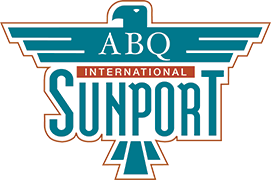Environmental & Sustainability
sustainability policy statement
The City of Albuquerque Aviation Department works to be increasingly sustainable with regard to natural resource conservation, economic strength and community contributions. As such, the department will:
- Establish and meet sustainability targets.
- Continually improve our sustainability approach and results.
- Make informed business decisions that incorporate sustainability factors.
Carbon Policy Statement
The Aviation Department has made great strides in implementing carbon reduction measures at both the ABQ Sunport and Double Eagle II Airport.
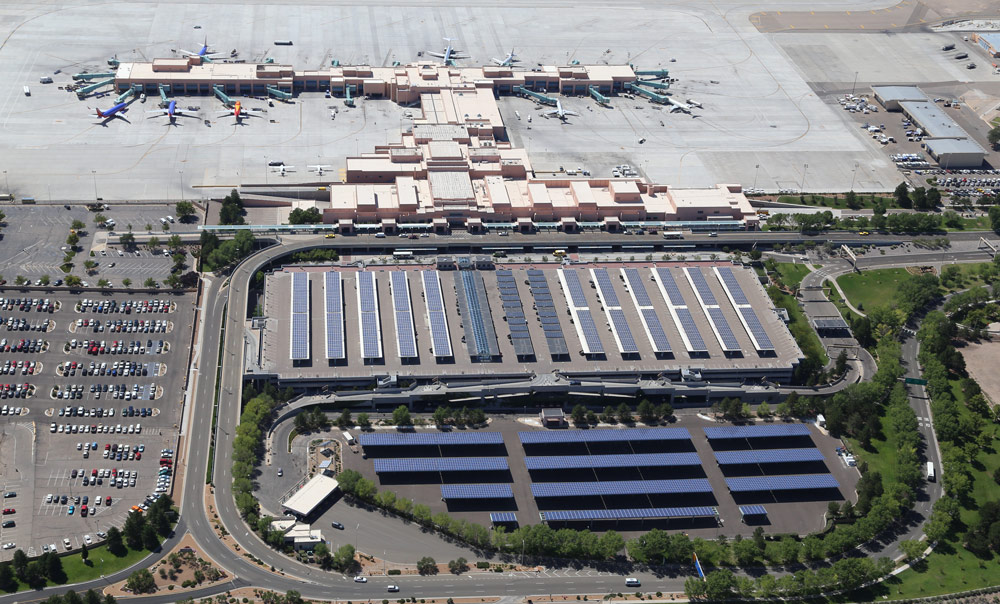
sustainability priorities
Albuquerque’s unique environmental attributes have been significant factors in its establishment, growth, and development. The Aviation Department will increase its emphasis on sustainability efforts to protect these resources through the following priorities.
- The Department will achieve its transportation and economic mission in a manner that demonstrates responsible stewardship with a focus on water conservation, minimizing greenhouse gas emissions and innovation.
- As it implements proactive sustainable management and practices that continually improve the environment, the Department will contribute to the economic, social, and environmental well-being of the City of Albuquerque and the region.
- The Department will fully comply with all applicable environmental laws, regulations, and other requirements and will exceed legal and regulatory standards where appropriate.
- The Department will influence tenants to encourage active participation in sustainability efforts.
management approach
The Aviation Department will actively approach environmental stewardship and sustainability using the following principles:
- Establishing Environmental Goals and Targets: Using innovative technologies and best management practices, the Department will develop, monitor, and regularly review specific activities and programs that improve environmental performance.
- Achieving Continual Environmental Improvement: The Department will strive to continually reduce the impacts of operations so that it preserves and protects surrounding natural resources through cost-effective energy use, recycling, water conservation, waste reduction, pollution prevention activities, and procurement of green materials.
- Using Sustainability in Business Decisions: The Department will seek to enhance the sustainability of its airports by incorporating sustainability into daily business decisions.
electric vehicles/equipment
The City of Albuquerque’s Aviation Department has recently acquired two electric Bobcat skid loaders through the FAA Voluntary Airport Low Emissions (VALE) program. These machines are currently being utilized for airfield maintenance at the Albuquerque International Sunport and Double Eagle II Airport. Albuquerque is among the first cities in the country to integrate electric skid loaders into its airfield maintenance operations. The Sunport has also renewed its Level 1 Airport Carbon Accreditation (ACA) and aims to achieve Level 2 accreditation later this year. By implementing these two electric Bobcats and continuing the conversion of its fleet from conventional engines to electric, the Aviation Department is positioned to significantly reduce emissions. This initiative demonstrates its commitment to addressing climate change.
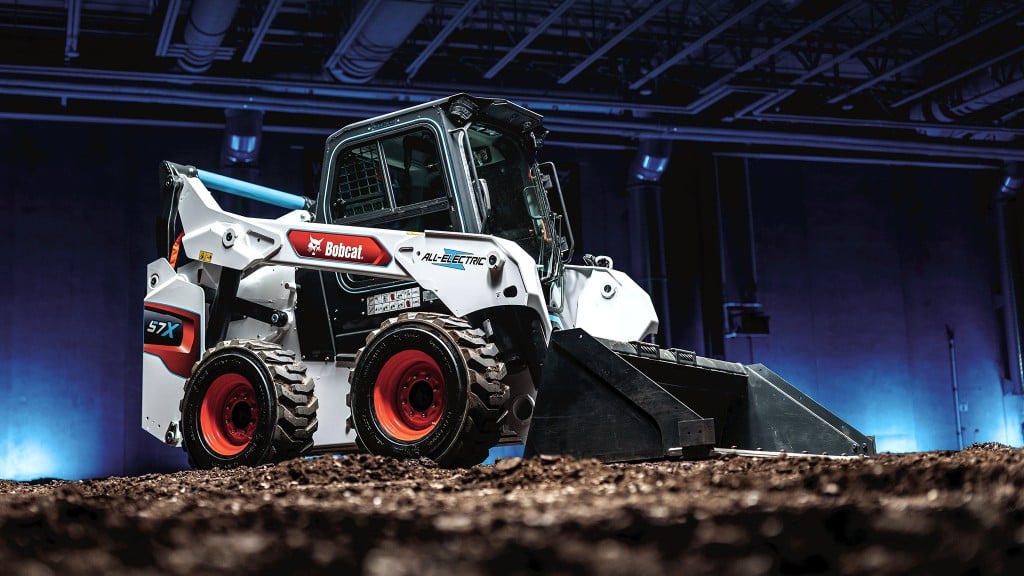
recycling efforts
flight tracking & noise complaints
Flight Tracking & Noise Complaints:
Aircraft typically arrive and depart heading into the wind. At the Sunport, winds tend to flow out of the east and west. Though flight paths in and out of the Sunport are fairly consistent, variations are to be expected based on air traffic, weather conditions, and overall safety.
The Sunport offers a web-based solution for tracking flights and filing noise complaints with the ability to view and track aircraft within the City of Albuquerque and surrounding areas in near real-time. The system provides information such as aircraft operations (arrival, departures, and overflights), aircraft ID and type, altitude, and speed.
Click the button below for more information and an overview of the Sunport’s Flight Tracking and Noise Complaint System. You may also call the noise hotline at (505) 842-2007.
Click here to access Flight Tracking & Noise Complaint System
To file an aircraft noise complaint by phone:
Please call the Noise Hotline at 505-842-2007. This hotline will prompt you to file and record your complaint. When filing a complaint please include the following:
- Name, address, and phone number that you can be contacted during business hours
- Date and time of occurrence
- Nature/description of the disturbance
- Description of aircraft if possible (i.e. helicopter, commercial airline, military, private aircraft, and any other distinguishing characteristics)
Frequently Asked Questions – Flights & Noise
How does weather affect aircraft noise?
Spring time and fall in Albuquerque are typically very pleasant so neither an air conditioner nor heater is operated. During these seasons, many people choose to leave windows open and utilize screen doors. As a result, people become more aware of aircraft traffic, vehicle traffic and other exterior noises. A greater number of noise complaints are received in the spring and fall when people are outside and windows are open.
There are many atmospheric conditions that can affect the intensity of aircraft noise; which varies from location to location. Noise propagation or the transmission of sound waves through the air can be influenced by wind, temperature, cloud cover and fog. These conditions do not encompass all weather phenomena and their effects on noise. However, this helps explain the day to day variations in the propagation of aircraft noise. Inversions can also affect aircraft noise.
Inversions do occur in Albuquerque; which form when the air temperature increases as altitude increases and can have similar effects on noise as cloud cover. These types of weather conditions slow the atmospheric absorption of the sound waves and may cause aircraft noise to appear louder. Aircraft noise is also more noticeable on days with clouds and overcast. This low ceiling cloud cover tends to reflect aircraft noise down toward the ground.
Wind direction and wind speed have a direct impact on the direction that aircraft can take off and land. As much as possible, aircraft pilots prefer to take-off and land into the wind. Pointing the aircraft into the wind increases the speed of the air flowing over an aircraft’s wings as it takes off and lands. This increases the margin of safety in the event of an engine failure or other emergency.
Most airports have multiple runways which are oriented in different directions. When wind direction and speed change; the aircraft are still able to land and depart the airport safely. The Albuquerque International Sunport has 3 runways; 08/26 which is in the east/west orientation, 03/21 having an orientation of northeast/southwest, and 12/30 having a southeast/northwest orientation. Residents who live and work around airports find that aircraft fly over their homes or workplaces on some days while not on others due to these kinds of runway options.
Why are planes flying over my neighborhood?
The FAA Air Traffic Control (ATC) and not the Sunport, has the sole authority and responsibility for routing and separating aircraft throughout the national airspace system. ATC’s first priority is always the safe and efficient separation and routing of aircraft throughout the national airspace system.
Like many other cities with an airport, the Albuquerque metropolitan area experiences many types of aircraft overflights that may or may not be related to Sunport operations. At any point the Albuquerque airspace can experience long haul flights en route (e.g. from Los Angeles to Baltimore) traveling at very high altitudes. This includes general aviation aircraft traveling to and from other local airports, military aircraft, local law enforcement aircraft and other commercial aircraft traveling to nearby commercial airports. Additionally, there is helicopter traffic from military, law enforcement, medical transportation or the local media.
If you live anywhere within the Albuquerque metro area you likely experience some type of aircraft overflights which are dependent on the weather, runways being utilized, type of aircraft and engine characteristics, and distance from the airport.
Who instructs the pilots when and where to turn?
Commercial pilots fly designated routes to and from Sunport as instructed by Federal Aviation Administration (FAA) air traffic controllers. The FAA is responsible for managing Albuquerque’s airspace and for ensuring the safe and efficient flow of air traffic.
Can the Sunport do something about helicopters flying over Albuquerque?
Typical complaints concerning helicopters are often related to military, law enforcement, medical and or media. These helicopters may fly below minimum altitude requirements if the operation is conducted without hazard to persons or property on the ground. These types of flights are not required to maintain any particular altitude above ground level and many of these helicopter flights do not originate or terminate at Sunport.
Is there a minimum altitude requirement for aircraft flying over residential areas and school yards?
The letter of agreement (LOA) between the Sunport, ATC, and Kirtland Airforce Base (KAFB) 58th Special Operations Wing (SOW) dictates that an aircraft is to climb as expeditiously as possible in order to fly over residential areas at or above 6,500 feet mean sea level (MSL). For most of Albuquerque this is approximately 1,500 feet above ground level (AGL).
Helicopters may fly below these minimum altitude requirements if the operation is conducted without hazard to persons or property on the ground. Local and state authorities do not have jurisdiction over airspace regulations and therefore, cannot mandate that aircraft and/or helicopters fly at higher altitudes.
Aircraft operating under visual flight rules outside or beneath the Tower’s airspace are not required to use air traffic’s services and fly unrestricted. A pilot can freely select his or her route and altitude with no restrictions other than those flight rules establishing minimum altitudes for flights over populated areas and required separation distances from clouds and terrain. The Federal Aviation Regulation (FAR) Part 91.119 indicates that, except when necessary for departure or landing, the minimum altitude over urban areas is 1,000 feet above ground level (AGL) and 500 feet AGL over rural areas.
How is a runway use determined at Sunport?
The decision to utilize a specific runway is determined by variables such as: weather, capacity, airport layout, aircraft performance, procedures found in the LOA and aircraft density in the surrounding airspace. When wind conditions permit, the traffic density and arrival/departure streams determine the runway use at the airport to ensure the most efficient and safe flow of air traffic.
Each morning at the Sunport, ATC sets the airport’s flow for the day based on the prevailing winds. Due to the complexities of re-routing aircraft to alternative runway ends, the flow is not changed unless wind conditions require it.
Why do some aircraft seem louder than others?
Noise levels of aircraft operating at the Sunport vary. This primarily depends on the type of engine on the aircraft, the overall size of the aircraft and whether the aircraft is taxiing on the airfield, landing or taking off.
Will registering a noise complaint change how the airport operates?
The Federal Aviation Administration (FAA) has the sole authority in determining where aircraft fly and how the airport will operate. These decisions are made based upon standard air traffic control procedures. Noise complaints are not taken into consideration when making these decisions. However, the Sunport dedicates a considerable amount of time in processing, researching and analyzing aircraft noise complaints which can then be shared with the FAA.
stormwater pollution prevention
Under the Clean Water Act, the National Pollutant Discharge Elimination System (NPDES) permit program controls water pollution by regulating sources that discharge pollutants into waters located in the United States. Industrial, municipal, and other facilities, including airports must obtain NPDES permits. The United States Environmental Protection Agency (EPA), Region 6 administers the NPDES permit program in the State of New Mexico and issued the Multi-Sector General Permit (MSGP) for stormwater discharges associated with industrial activity on March 1, 2021.
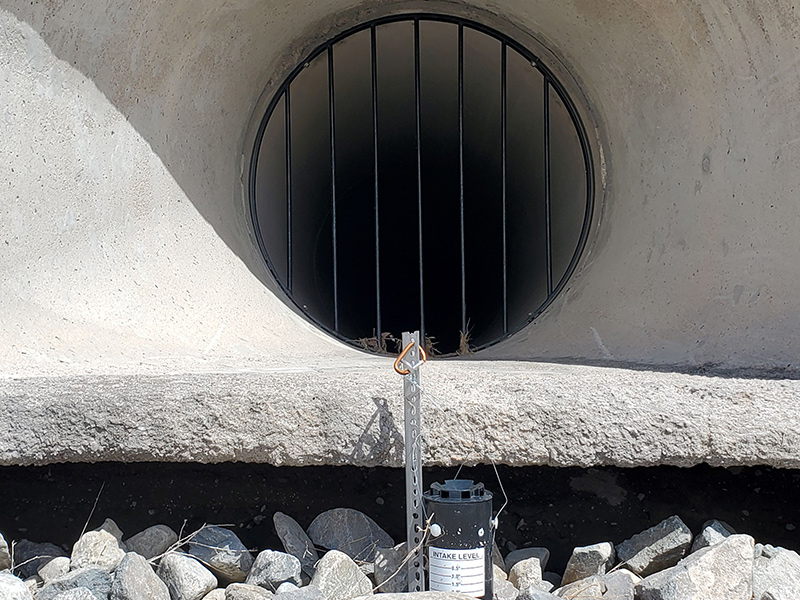
Stormwater outfalls with automatic water samplers
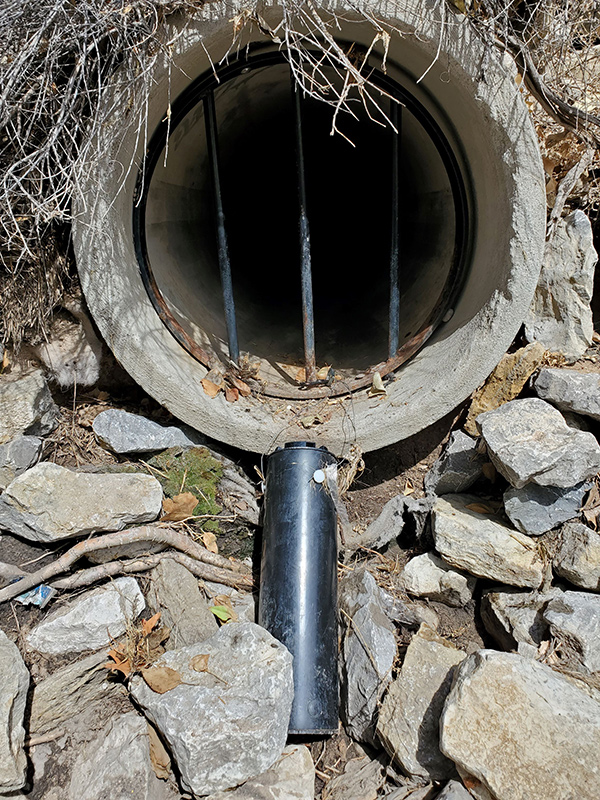
Stormwater outfalls with automatic water samplers
Activities such as aircraft, vehicle, and ground support equipment fueling; aircraft, vehicle, and equipment maintenance; aircraft and runway de-icing and anti-icing, and material handling and storage that take place at the airport can be exposed to precipitation. Runoff from rain or snowmelt has the potential to come into contact with these activities and their pollutants and transporting them to the nearby storm sewer system or directly to a river or receiving water. To minimize the impact of stormwater discharges from the airport, the 2021 MSGP includes an industrial stormwater permitting sector, “Sector S Air Transportation” that contains specific requirements for the airport to comply with and to develop a stormwater pollution prevention plan (SWPPP) specific to the airport.
Stormwater Pollution Prevention Plans have been developed for both the Albuquerque International Sunport and Double Eagle II Airport and can be accessed in the links below.
Albuquerque International Sunport Stormwater Pollution Plan and 2021 MSGP
ABQ 2021 SWPPP – Appendices A-C
ABQ 2021 SWPPP – Appendices D-G
ABQ 2021 SWPPP – Appendices H-N
Double Eagle Airport Stormwater Pollution Plan and 2021 MSGP
DEII 2021 SWPPP – Appendices A-C
DEII 2021 SWPPP – Appendices D-G
DEII 2021 SWPPP – Appendices H-N
EPA’s Multi-Sector General Permit (MSGP) Website
airport carbon accreditation
The Albuquerque International Sunport is committed to being as sustainable as possible. As of December 5th, 2023, the Sunport has been awarded its Level 1 Airport Carbon Accreditation (ACA). This accreditation is globally recognized with 27 airports in North America currently accredited at Level 1. This effort required the Sunport to establish a baseline greenhouse gas emissions inventory as well as publicly posting a Carbon Policy Statement (see link at top of page). Developing our GHG emissions inventory involved extensive research into the Sunport’s utility usage including electric, natural gas, generator and boiler consumptions along with several other facility operations. All of which was required to have an independent verifier review for accuracy. If you would like more information regarding Airport Carbon Accreditation, please click on the following link www.airportcarbonaccreditation.org
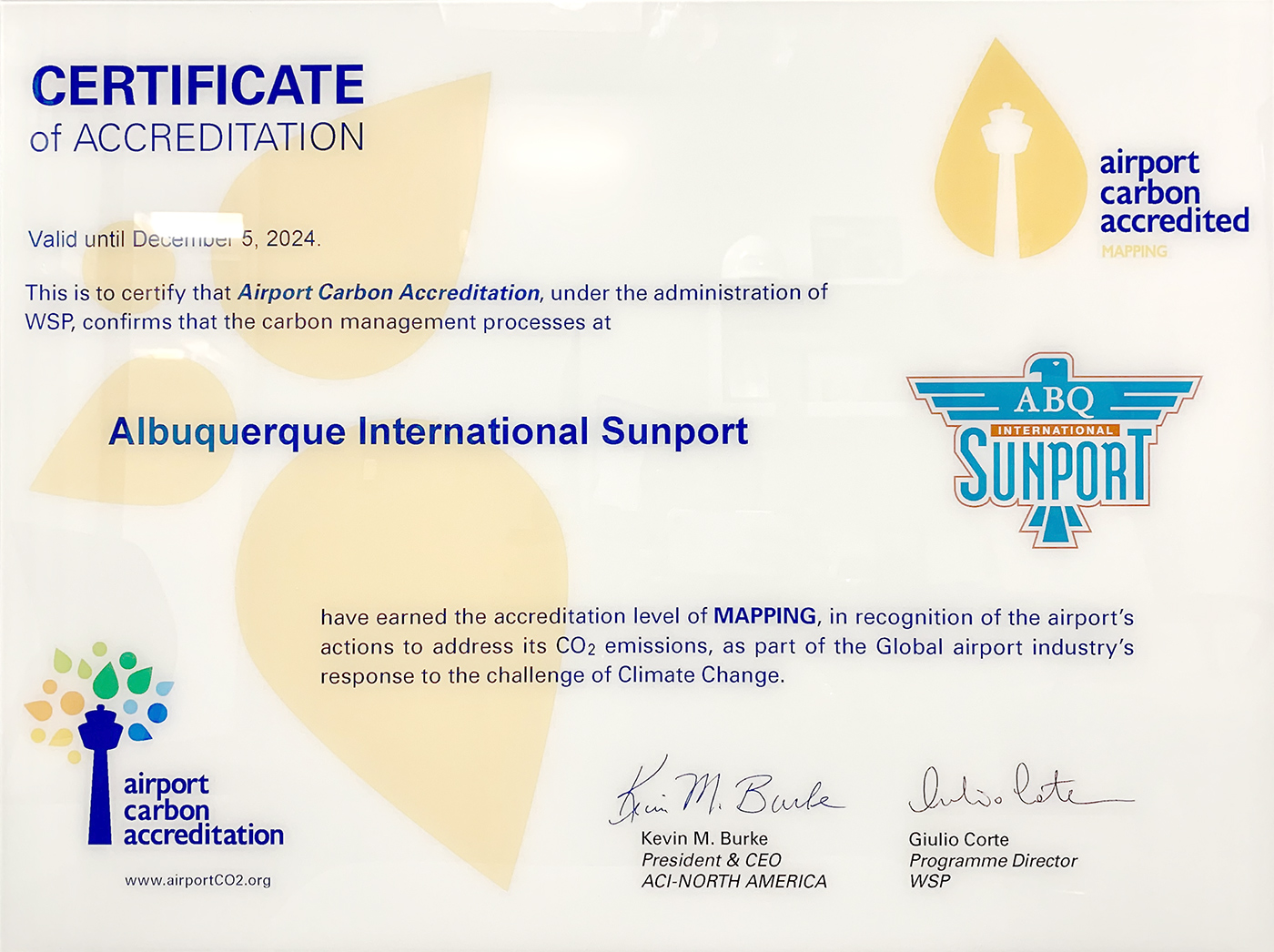
water conservation
In 2014, the Sunport revised and updated the Aviation Department’s Water Conservation Plan which was implemented in 2004. The 2014 “Water Use Report and Conservation Plan Update” (Plan) is an effective and critical component of reducing water use to ensure a future water supply for the City of Albuquerque. The Plan discusses conservation measures already taken by the Aviation Department and provides additional water-saving recommendations for the future.
Sunport Blvd. landscaping was installed with low-water-use plant materials (xeric). The median portion of the landscape was designed for the efficient capture of stormwater by creating swales in terrain eliminating runoff from the area.
This design was recognized and received an award for water conservation. The sloped areas north and south of the roadway are supporting the Buffalo and Blue Gramma grass. These grasses are quite drought-tolerant and require much less maintenance (mowing, fertilizing, etc.) than the cool season turf varieties commonly used. All of the newer installations of landscape included a new installation of irrigation systems. The system programming is now controlled by a central computer system allowing much better and more efficient use of water. Another aspect of the diversity of the landscape is the vast inventory of trees. The landscape maintenance crews have been aggressively increasing the number of trees throughout the landscape while maintaining the existing inventory. These trees are a vital element in the Sunport’s sustainability goals. Trees perform a multitude of functions including carbon sequestration, converting CO2 to oxygen, stormwater mitigation, erosion control, natural cooling, and the reduction of VOC emitted by automobiles to name a few.
In 2010, a new water line originating from the wastewater treatment plant through the Sunport was installed to supply non-potable treated re-use water for irrigating the landscape at the Sunport. This reclaimed water will still provide needed irrigation to the 70 acres of landscape at the Sunport, without the need for millions of gallons of drinking water per year. This project was carried out in partnership with the Albuquerque Bernalillo County Water Utility Authority (ABCWUA), the local provider of water and wastewater services. The final conversion from potable to non-potable water for irrigation consists of the installation of booster pumps with the associated infrastructure. This conversion effort was completed in April of 2022 and has saved, in the past 12 months (August 2022 – July 2023), approximately 16,831,411 gallons of drinking water.
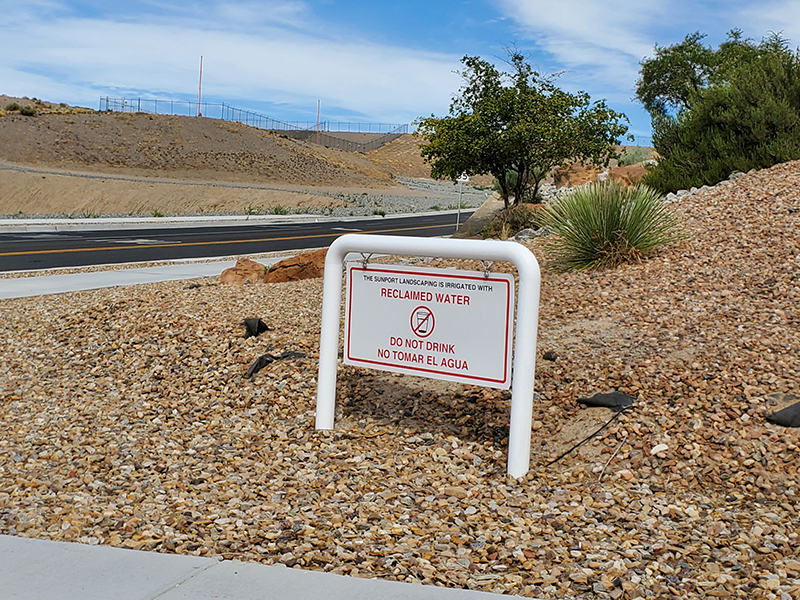
Public signage stating “The Sunport landscaping is irrigated with reclaimed water – do not drink (no tomar el agua)”
electric ground support equipment (GSE)
In 2014, 20 electric charging stations were installed at the Sunport for airline ground support equipment (GSE), allowing airlines to replace their internal combustion engine equipment with electrical equipment. Ground support equipment includes
- belt loaders (conveyers that help load luggage into the cargo area of the plane)
- baggage tractors (vehicles that bring luggage from the ticket counter to the plane)
- pushback tractors (push planes away from gate before departures)
The installation of these electric charging stations has helped to decrease emissions at the Sunport and contribute to better air quality in Albuquerque and Bernalillo County. This project was partially funded with a Voluntary Airport Low Emissions (VALE) grant from the Federal Aviation Administration (FAA).
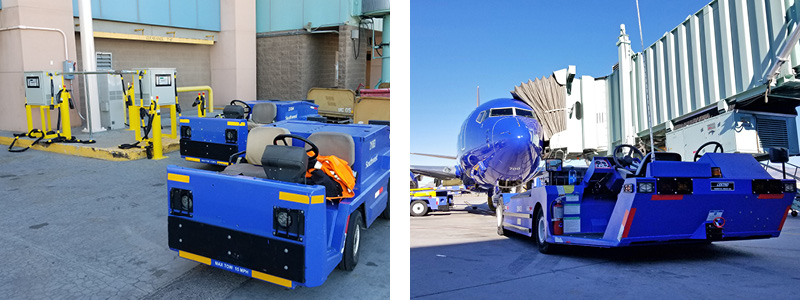
solar photovoltaic system
In 2010, a new solar photovoltaic (PV) project was installed on the Sunport parking structure 4th level canopies. The project was largely funded by a Federal Aviation Administration (FAA) Voluntary Airport Low Emissions (VALE) grant. This solar PV system has added an additional 440 kW and 2,016 panels to the existing 146 kW 480-panel system covering the eight western-most canopies of the parking structure.
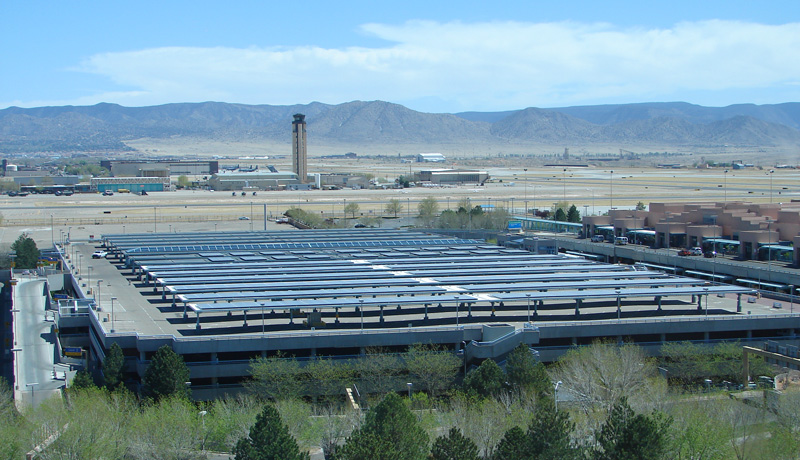
In 2011, the Sunport was awarded another FAA VALE grant for the installation of an additional 411 kW solar PV system on the five remaining canopies of the Parking Structure. The approximate one-megawatt solar PV system located on the 4th level parking structure provides electric power to the structure during daylight hours and significantly reduce electricity consumption and billing costs. The excess power is used in the terminal building.
In 2013, a new one-megawatt solar photovoltaic (PV) system consisting of 4,060 solar PV panels and occupying approximately 191,000 square feet of space was installed over the Sunport long term parking lot. The project was largely funded by an FAA Airport Improvement Program (AIP) grant funding. The solar PV system provides electric power to the Sunport terminal building.
Maintenance technicians have also completed the Photovoltaic Academy offered by CNM Workforce Training Center. Electricians will now be able to obtain a NABCEP licensee (North American Board of Certified Energy Practitioners) a nationally recognized standard. This training complements our solar array & solar chiller installations.
recycling
The Sunport employs more than 300 people and has approximately 5.4 million passengers travel through the airport annually which creates plenty of opportunity to recycle much of the waste that’s generated. Because of this, the Sunport implemented a recycling program in 2007.
In 2008, the Sunport generated approximately 1,572 tons of solid waste which decreased by 32% down to approximately 1,071 tons by 2019. In addition to reducing the amount of solid waste generated, recycling increased. From 2008 to 2019 the Sunport grew its recycling by approximately 120% from 59 tons per year to 130 tons per year. The effects of COVID-19 on the Sunport’s recycling initiative greatly decreased this annual tonnage due to heavily reduced travel. However, as aviation returns to pre-COVID-19 activity – the Sunport’s recycling tonnage has continued to steadily increase from 50 tons in 2020 up to 96 tons by 2022.

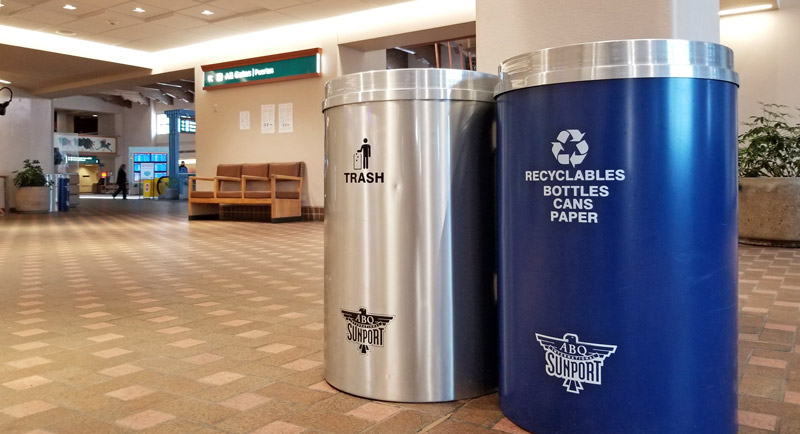
To help make it more convenient to recycle while on the go, 70 co-located recycle and solid waste stations are available throughout the Sunport for passenger use; in the blue containers please dispose of paper (including newspaper and magazines), aluminum cans and plastic bottles for recycling.
Recycling doesn’t stop with our passengers; recycle containers are also present behind the scenes, in employee offices, work areas, and break rooms. In addition to comingled recycling, the Sunport also recycles its toner cartridges, oil and filters from Aviation fleet vehicles and even food waste from restaurant kitchens.
airfield led lighting and fluorescent lamp replacement
Ballast and fluorescent lamps have beem swapped out in the airfield maintenance facility as part of the City of Albuquerque’s Green Initiative Program. The new fixtures are low-energy electronic ballasts and T8 lamps. Other steps taken to lower the amount of energy being used is the replacement of exit signs with low energy consuming LED fixtures and motion-detecting timer light switches in employee break rooms, men’s restroom and Airfield Manager’s office to assist in verifying that lights are being turned off when not in use
Additionally, conventional taxiway lighting was replaced with LEDs. The LED technology will provide an approximate 70% energy reduction from conventional technologies with an expected useful life of over 100,000 hours.
police bike patrols
Bikes provide environmental and health benefits. Bike patrols run on human power rather than gas, therefore their carbon footprint is much smaller than would be with patrol cars. With zero emissions, bicycle patrols may be an attractive option for green initiatives.
The Albuquerque Aviation Police also developed this program to improve response time and to detect criminal activity. The bike patrol provides better speed and mobility than foot patrol and access to areas where patrol vehicles are often limited. The bike officers sit up higher, giving them a panoramic view of activities. They patrol areas including the terminal, parking structures, and the rental car facility.
Officers have greater contact with citizens than vehicle patrols and blend into the environment, allowing them to go undetected by individuals who may engage in anti-social behavior. The physical activity involved also provides exercise for the officers, keeping them in great shape. It not only improves their health but keeps them alert and provides a sense of well-being.
Each of the officers selected for bike patrol duties undergo intense training on all aspects of bike safety and tactical deployment methods. Overall, they provide an additional layer of security at the Albuquerque Sunport.
green cleaning
All Sunport custodial supervisors and upgrade supervisors have been trained and certified as green clean technicians. The Green Clean Institute Certification Program not only qualifies individuals but also buildings and organizations. Both of these programs led to meeting a portion of the LEED Certification requirements for the Sunport.
The City of Albuquerque Aviation Department has received certification from the Green Clean Institute. This has been achieved through our custodial supervisor & upgrade training, along with rank & file and use of innovative techniques and special tools.
In addition, the staff receives Green training each month to educate them with new Green Clean Standards. We have implemented a Train the Trainer program where the Certified Supervisor trains the staff from the Green Clean Technician 101 Training Manual. Each month one chapter is reviewed and questions are answered in a group setting, after which the staff applies their knowledge in the field.
